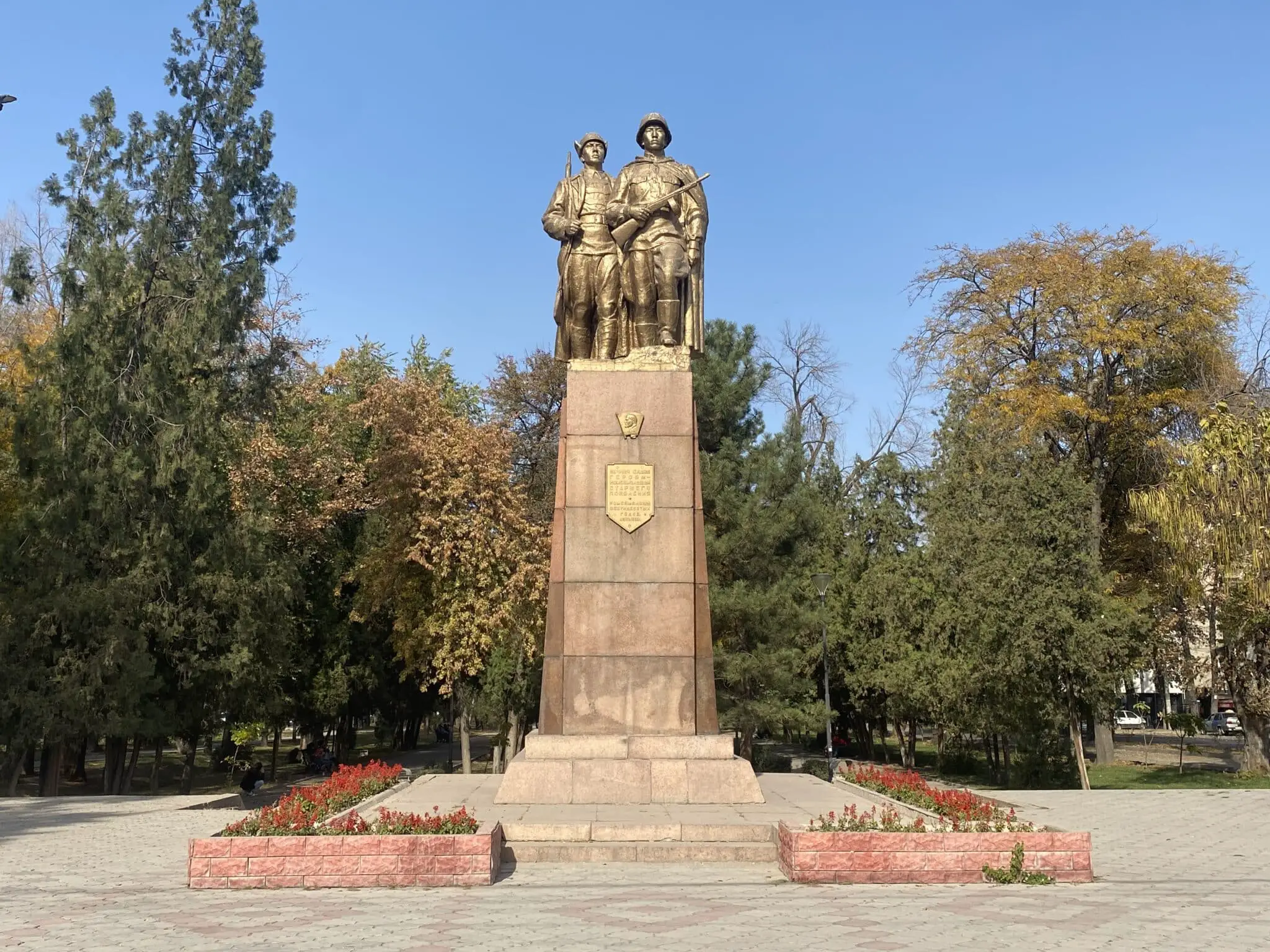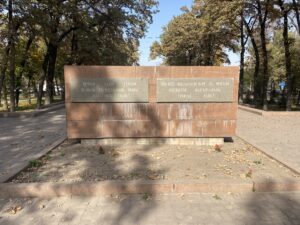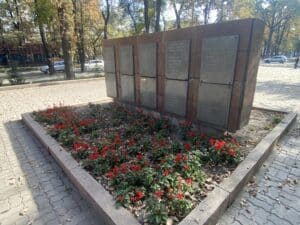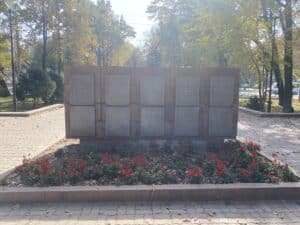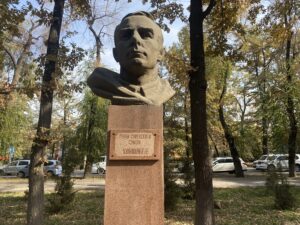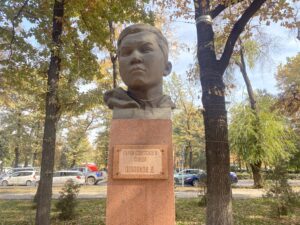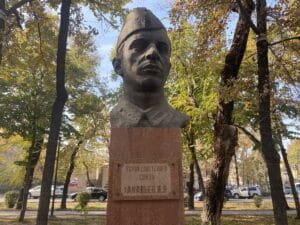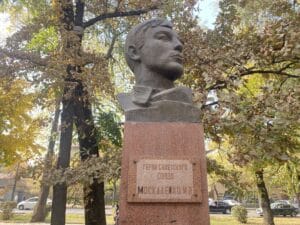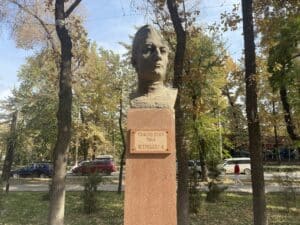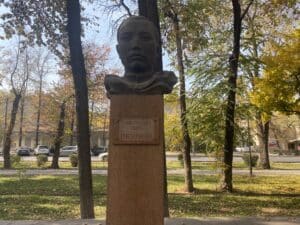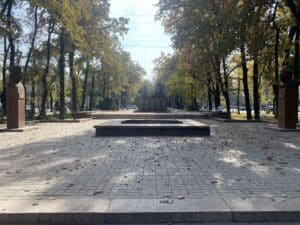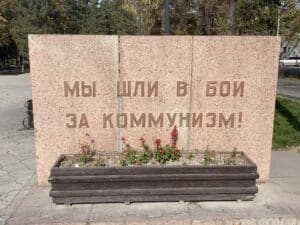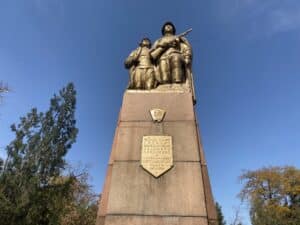The Alley of Heroes is located in a well-shaded park spanning 1.5 km in length that runs down the middle of Jash Gvardiya Boulevard. The monument itself is centrally located at the intersection of Chuy Avenue, around 2.5 km due west of Ala-Too Square. The park is an enjoyable place to spend time to chat, read, or simply visit. There are plenty of bus routes to and from the area cafes and many restaurants and shops nearby.
The Alley of Heroes starts with a large stone marker surrounded by a flower bed, containing plaques to commemorate the dates of the Second World War on one side and the names of soldiers from Kyrgyzstan who fought on the other. Just past that are six busts with plaques honoring six soldiers who received the highest award given in that war: Hero of the Soviet Union.
The Alley of Heroes was created in 1975 by the government of Kyrgyz SSR.
Alley of Heroes Busts
Hero of the Soviet Union was an award and title that came alongside an Order of Lenin award and was presented as a certificate and a gold star. The title granted special privileges in the Soviet Union such as extra living space and higher pensions. The award was given for heroic feats in service to the Soviet state and society. A total of 12,777 people were awarded the title Hero of the Soviet Union during its time. Only 12 recipients, however, were ethnic Kyrgyz.
One bust is dedicated to Duishenkul Shopokov. Shopokov was born in Kyrgyzstan and was drafted into the Red Army at the start of World War II. He died during a large battle in Dubosekovo, part of the Moscow region, and was posthumously awarded the title Hero of the Soviet Union for exemplary performance of combat missions.
Tuleberdiev Cholponbai is also honored with a bust, having earned the award for his actions that led to the securing of a strategic bridgehead in Russia’s Voronezh Region. Cholponbai and a group of 10 other volunteers went ahead of a larger force to destroy German firing positions blocking the crossing of the Don (a river in South Russia). Under heavy fire, Cholponbai gave his life to destroy a vital firing position for the entrenched German invaders, allowing the larger Red Army force to advance across the river. He was awarded the title Hero of the Soviet Union posthumously.
The other four busts are dedicated to soldiers of non-Kyrgyz nationalities that lived in Kyrgyzstan at the time they joined the war effort. Grigory Konkin, for instance, was born in the Issyk-Kul region of Kyrgyzstan. Grigory Petrenko was born in Ukraine, but worked 10 years on a collective farm in Kyrgyzstan before being drafted into the Red Army. Ivan Moskalenko, born in Russia, worked as an accountant in the Issyk-Kul region of Kyrgyzstan before being drafted into the Red Army. Nikolay Ananiev was a Russian born in a village in the Issyk-Kul region and worked on a collective farm before being drafted.
All four men as well as Shopokov were all awarded the title Hero of the Soviet Union posthumously after they had fought together in a large battle in the Dubosekovo region, where they were vital in preventing a German advance towards Moscow.
The Young Guards’ Monument
After walking through the alley your eyes will naturally be drawn to a large monument dedicated to the Young Guards. This monument was constructed and opened in 1963 by the League of Young Communists. If you are taking in the Alley of Heroes, this is a good monument to naturally include to your time due to its proximity. Note that the boulevard the monument is located on, Jash Gvardiya, is actually named for the Young Guard’s Kyrgyz name.
The Young Guards was a group that operated as a resistance movement in German occupied Ukraine and later held up with reverence throughout the USSR. There are many books and even a movie that details the stories of the Young Guards. The monument represents the memory of the Young Guards, but further represents the sacrifices of young people made during the Second World War from all member states of the Soviet Union.
The imposing statue to the guards, featuring two young soldiers on top of a tall pedestal, is opposite the Alley of Heroes and directly across the street as a continuation of the park. There are two plaques on the monument, one with the face of Lenin and one with the name of the monument and the year it was built. There are also two stone markers closer to the street with the phrase, “We went to war for Communism.”
Conclusion
The Alley of Heroes has a relaxed atmosphere and is a place where many locals gather to stroll and spend time. Situated at either end of the long park are small playgrounds for kids, and benches and trees line the walkway that runs its length. There are people simply walking through, others reading or talking, and often kids playing and running around.
The park does not close and you may find people strolling throughout late into the night due to the nightlife surrounding it. While the Alley of Heroes may not take long to walk through, you can easily spend a good amount of time enjoying the nature and the atmosphere of the unique space spanning the length of a Jash Gvardiya boulevard.
You Might Also Like
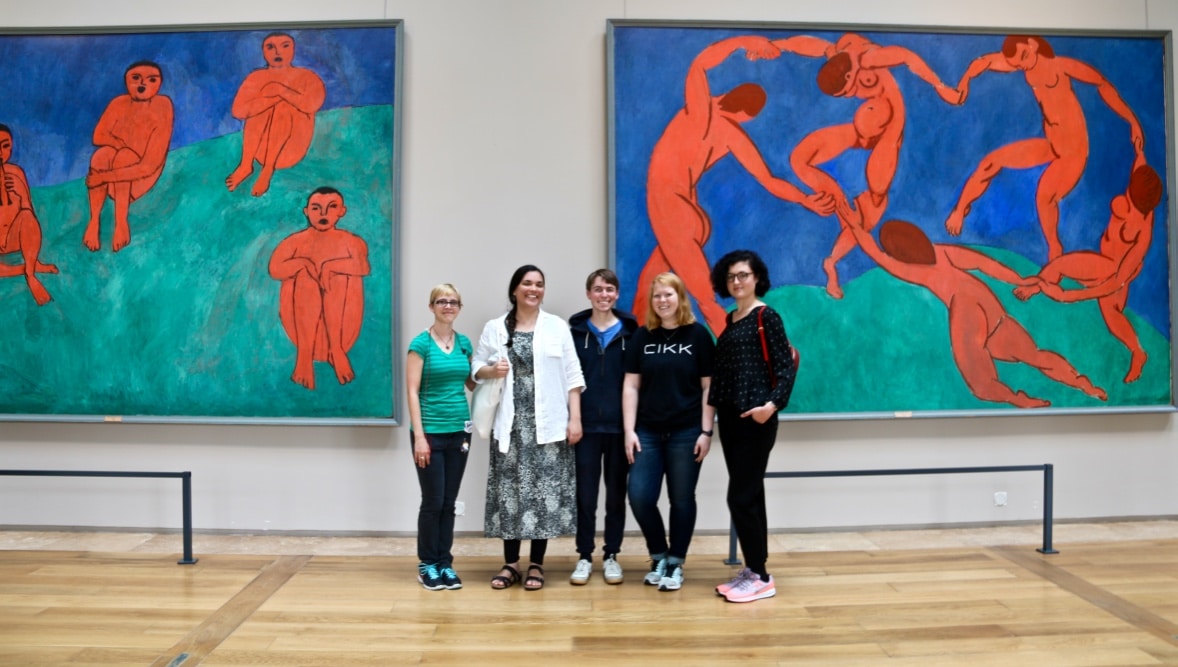
Museums as Self-Care
In 2018, doctors in Montreal began prescribing visits to the Montreal Museum of Fine Arts (MMFA) for patients experiencing depression, anxiety, and other health issues. This innovative approach to mental health treatment was launched under the initiative of the MMFA in collaboration with Médecins francophones du Canada (MFdC). The program allows physicians to provide patients […]
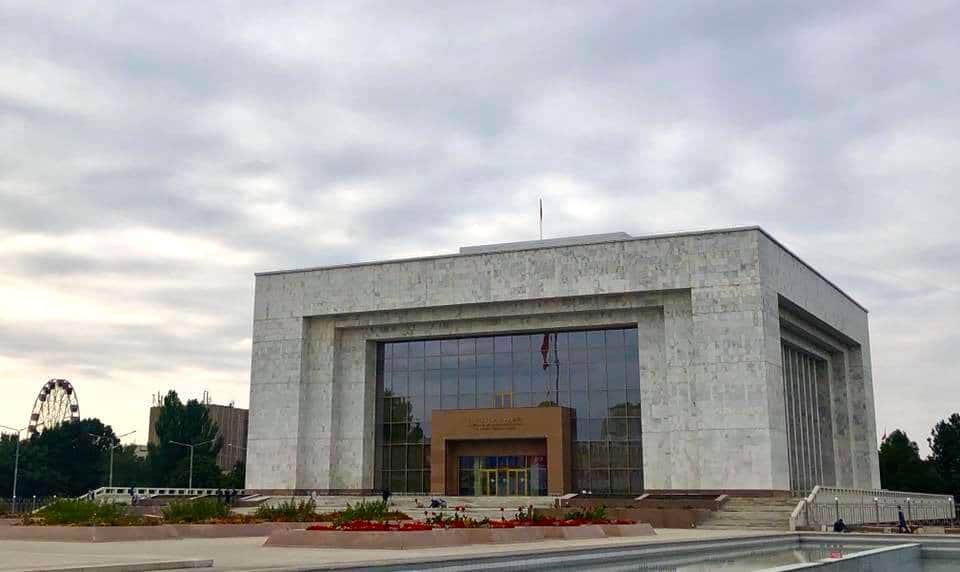
Guide to Bishkek’s Top Museums for Students
The Kyrgyz were largely a nomadic civilization up until the 20th century. The city of Bishkek has a number of museums documenting this fascinating history as well as the development of the arts and sciences in Kyrgyzstan. These museums were mostly established during (and today are often unchanged from) Soviet times, including a number of […]
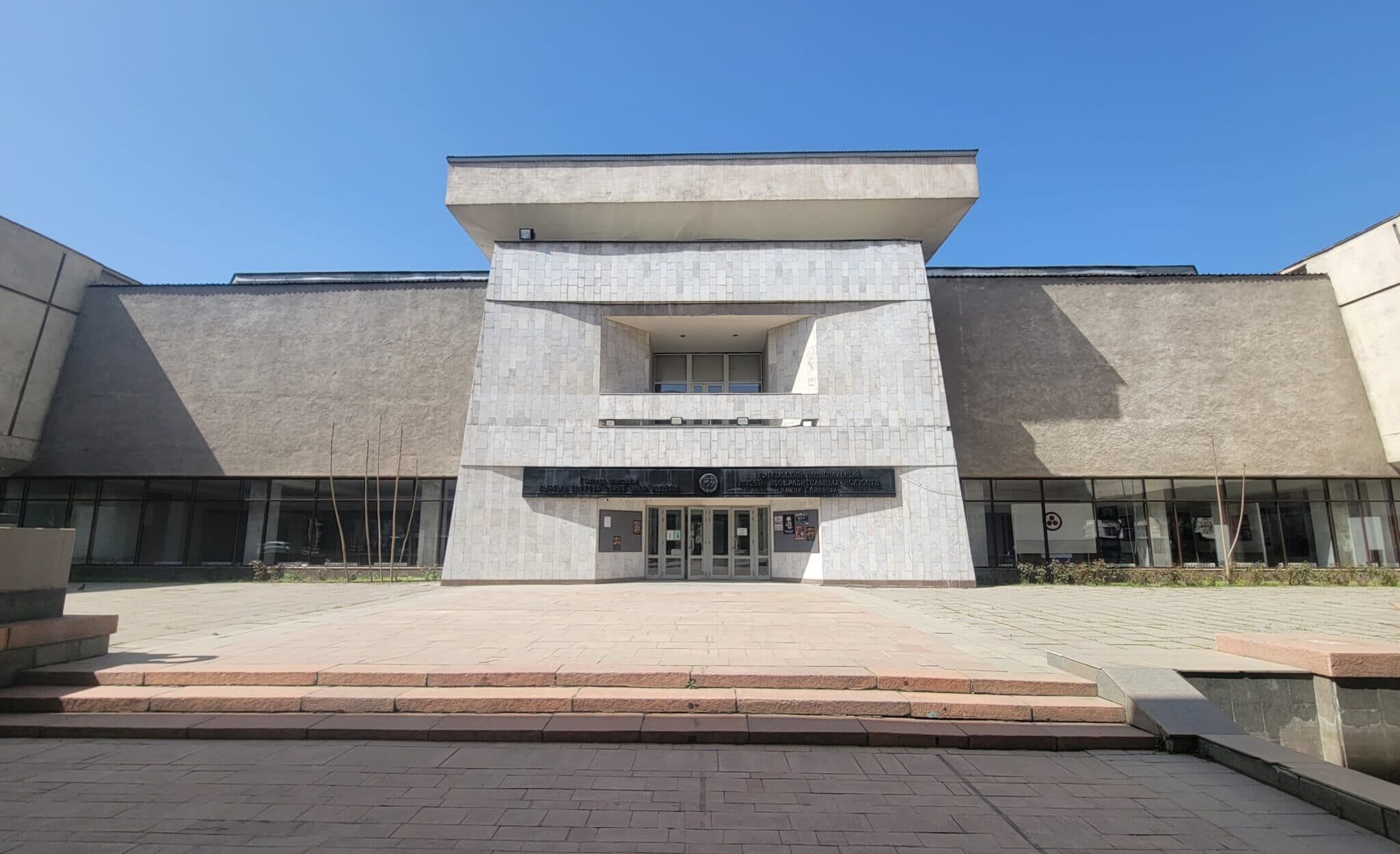
The Kyrgyz National Museum of Fine Arts in Bishkek
The Kyrgyz National Museum of Fine Arts in Bishkek showcases native art forms as well as painting, sculpture, and other works, highlighting those created by Kyrgyz artists. The museum is centrally located and is perfect for a day trip with an abundance of restaurants and cafes nearby. The article below will tell the history of […]
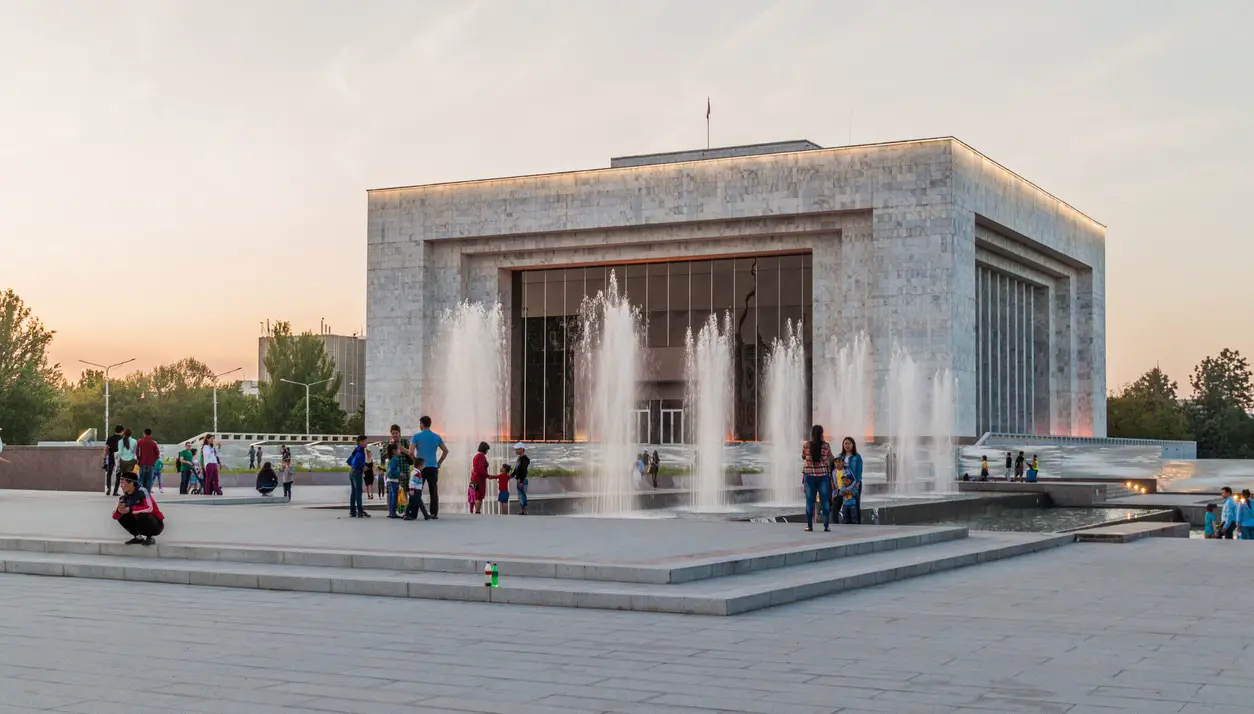
The National Historical Museum of the Kyrgyz Republic
The National Historical Museum of the Kyrgyz Republic is a great place to get started when visiting Kyrgyzstan. The museum’s extensive collection of more than 90,000 exhibits includes artifacts from Kyrgyzstan’s prehistory, from its ancient Silk Road era, Soviet-era history, and modern state. Culture exhibits focus on Kyrgyz nomadic culture, traditional handicrafts, and the musical […]

The Evolution of Art and Painting in Central Asia
While Central Asia has a long, rich history, the modern nations of the region are a direct result of 20th century colonization. Prior to Soviet interference, the many ethnic groups and distinct societies of the region were loosely grouped under the geographic term of Turkestan. Under Soviet control, the region was divided into the Turkmen […]


